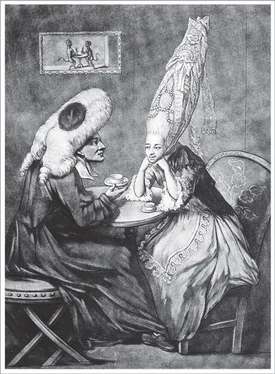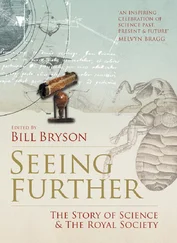Bill Bryson - At Home
Здесь есть возможность читать онлайн «Bill Bryson - At Home» весь текст электронной книги совершенно бесплатно (целиком полную версию без сокращений). В некоторых случаях можно слушать аудио, скачать через торрент в формате fb2 и присутствует краткое содержание. Жанр: Старинная литература, на английском языке. Описание произведения, (предисловие) а так же отзывы посетителей доступны на портале библиотеки ЛибКат.
- Название:At Home
- Автор:
- Жанр:
- Год:неизвестен
- ISBN:нет данных
- Рейтинг книги:4 / 5. Голосов: 1
-
Избранное:Добавить в избранное
- Отзывы:
-
Ваша оценка:
- 80
- 1
- 2
- 3
- 4
- 5
At Home: краткое содержание, описание и аннотация
Предлагаем к чтению аннотацию, описание, краткое содержание или предисловие (зависит от того, что написал сам автор книги «At Home»). Если вы не нашли необходимую информацию о книге — напишите в комментариях, мы постараемся отыскать её.
At Home — читать онлайн бесплатно полную книгу (весь текст) целиком
Ниже представлен текст книги, разбитый по страницам. Система сохранения места последней прочитанной страницы, позволяет с удобством читать онлайн бесплатно книгу «At Home», без необходимости каждый раз заново искать на чём Вы остановились. Поставьте закладку, и сможете в любой момент перейти на страницу, на которой закончили чтение.
Интервал:
Закладка:
Exactly how long and in what manner mourning clothes were worn was determined with equally meticulous precision by the degree of one’s bereavement. Widows, already swaddled in pounds of suffocating broadcloth, had additionally to drape themselves in black crape, a type of rustly crimped silk. Crape was scratchy, noisy, and maddeningly difficult to maintain. Raindrops on crape left whitish blotches wherever they touched it, and the crape in turn ran onto fabric or skin underneath. A crape stain ruined any fabric it touched and was nearly impossible to wash off skin. The amounts of crape worn were strictly dictated by the passage of time. One could tell at a glance how long a woman had been widowed by how much crape she had at each sleeve. After two years, a widow moved into a phase known as “half mourning” when she could begin to wear gray or pale lavender, so long as they weren’t introduced too abruptly.
Servants were required to mourn when their employers died, and a period of national mourning was decreed when a monarch died. Much consternation ensued when Queen Victoria expired in 1901, because it had been over sixty years since the last regal departure and no one could agree what level of mourning was appropriate to such a long-lasting monarch in such a new age.
As if Victorians didn’t have enough to worry about already, they developed some peculiar anxieties about death. Edgar Allan Poe exploited one particular fear to vivid effect in his story “The Premature Burial” in 1844. Catalepsy, a condition of paralysis in which the victim merely seemed dead while actually being fully conscious, became the dread disease of the day. Newspapers and popular magazines abounded with stories of people who suffered from its immobilizing effects.
One well-known case was that of Eleanor Markham of upstate New York, who was about to be buried in July 1894 when anxious noises were heard coming from her coffin. The lid was lifted and Miss Markham cried out: “My god, you are burying me alive!” She told her saviors: “I was conscious all the time you were making preparations to bury me. The horror of my situation is altogether beyond description. I could hear everything that was going on, even a whisper outside the door.” But no matter how much she willed herself to cry out, she said, she was powerless to utter a noise.
According to one report, of twelve hundred bodies exhumed in New York City for one reason or another between 1860 and 1880, six showed signs of thrashing or other postinterment distress. In London, when the naturalist Frank Buckland went looking for the coffin of the anatomist John Hunter at St. Martin-in-the-Fields Church, he reported coming upon three coffins that showed clear evidence of internal agitation (or so he was convinced). Anecdotes of premature burials featured in even serious publications. A correspondent to the British journal Notes and Queries offered this contribution in 1858:
A rich manufacturer named Oppelt died about fifteen years since at Reichenberg, in Austria, and a vault was built in the cemetery for the reception of the body by his widow and children. The widow died about a month ago and was taken to the same tomb; but, when it was opened for that purpose, the coffin of her husband was found open and empty, and the skeleton discovered in a corner of the vault in a sitting posture.
For at least a generation such stories became routine in even serious periodicals. So many people became morbidly obsessed with the fear of being interred before their time that a word was coined for it: taphephobia . The novelist Wilkie Collins placed on his bedside table each night a letter bearing standing instructions of the tests he wished carried out to ensure that he really had died in his sleep if he was found in a seemingly corpselike state. Others directed that their heads be cut off or their hearts removed before burial, to put the matter comfortably (if that is the right word) beyond doubt. One author proposed the construction of “Waiting Mortuaries,” where the departed could be held for a few days to ensure they really were quite dead and not just unusually still. Another more entrepreneurial type designed a device that allowed someone awaking within a coffin to pull a cord, which opened a breathing tube for air and simultaneously set off a bell and started a flag waving at ground level. An Association for Prevention of Premature Burial was established in Britain in 1899 and an American society was formed the following year. Both societies suggested a number of exacting tests to be satisfied by attending physicians before they could safely declare a person dead—holding a hot iron against the deceased’s skin to see if it blistered was one—and several of these tests were actually incorporated into medical schools’ curricula for a time.
Grave robbing was another great concern—and not without reason, for the demand for fresh bodies in the nineteenth century was considerable. London alone was home to twenty-three schools of medicine or anatomy, each requiring a steady supply of cadavers. Until the passing of the Anatomy Act in 1832, only executed criminals could be used for experiment and dissection. Yet executions in England were much rarer than is commonly supposed: in 1831, a typical year, sixteen hundred people were condemned to death in England, but only fifty-two executed. So the demand for bodies was way beyond what could be legally supplied. Grave robbery in consequence became an irresistibly tempting business, particularly as stealing a body was, thanks to a curious legal quirk, a misdemeanor rather than a felony. At a time when a well-paid working man might earn £1 in a week, a fresh corpse could fetch £8 or £10 and sometimes as much as £20, and, at least initially, without much risk as long as the culprits were careful to remove only the bodies and not shrouds, coffins, or keepsakes, for which they could be charged with a felony.
It wasn’t just a morbid interest in dissection that drove the market. In the days before anesthetics, surgeons really needed to be closely acquainted with bodies. You can’t poke thoughtfully among arteries and organs when the patient is screaming in agony and spurting blood. Speed was of the essence, and the essential part of speed was familiarity, which could only come with much devoted practice on the dead. And of course the lack of refrigeration meant that flesh began to spoil quickly, so the need for fresh supplies was constant.
To thwart robbers, the poor in particular often held on to departed loved ones until the bodies had begun to putrefy and so had lost their value. Edwin Chadwick’s Report on the Sanitary Condition of the Labouring Classes of Great Britain was full of gruesome and shocking details about the practice. In some districts, he noted, it was common for families to keep a body in the front room for a week or more while waiting for putrefaction to get a good hold. It was not unusual, he said, to find maggots dropping onto the carpet and infants playing among them. The stench, not surprisingly, was powerful.
Graveyards also improved their security, employing armed night-watchmen. That severely elevated the risk of being apprehended and beaten, so some resurrection men, as they were popularly known, turned to murder as safer. The most notorious and devoted were William Burke and William Hare, Irish immigrants in Edinburgh, who killed at least fifteen people in a period of less than a year, beginning in November 1827. Their method was crudely effective. They befriended sad wastrels, got them drunk, and suffocated them, the stout Burke sitting on the victim’s chest and Hare covering the mouth. The bodies were taken at once to Professor Robert Knox, who paid from £7 to £14 for each fresh, pink corpse. Knox must have known that something exceedingly dubious was going on—two Irish alcoholics turning up with a succession of extremely fresh bodies, each having expired in seemingly tranquil fashion—but maintained that it was not his business to ask questions. He was widely condemned for his part in the affair, but never charged or penalized. Hare escaped hanging by turning king’s evidence and offering to testify against his friend and partner. This proved unnecessary, as Burke made a full confession and was swiftly hanged. His body was delivered to another anatomy school for dissection, and pieces of his skin were pickled and for years handed out as keepsakes to favored visitors.
Читать дальшеИнтервал:
Закладка:
Похожие книги на «At Home»
Представляем Вашему вниманию похожие книги на «At Home» списком для выбора. Мы отобрали схожую по названию и смыслу литературу в надежде предоставить читателям больше вариантов отыскать новые, интересные, ещё непрочитанные произведения.
Обсуждение, отзывы о книге «At Home» и просто собственные мнения читателей. Оставьте ваши комментарии, напишите, что Вы думаете о произведении, его смысле или главных героях. Укажите что конкретно понравилось, а что нет, и почему Вы так считаете.












